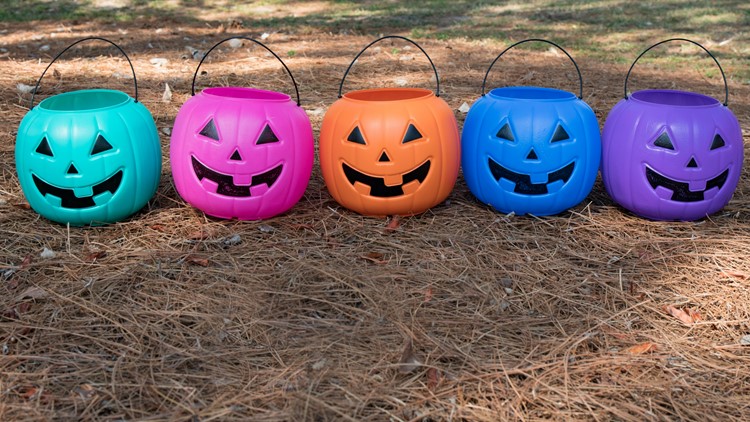Lifestyle
Discover the Meaning Behind Colorful Pumpkins This Halloween

As Halloween approaches, homes across the United States are beginning to display an array of pumpkins in various colors, each carrying a significant message. This year, the trend of using non-traditional pumpkins aims to raise awareness about important health issues, making the holiday more inclusive for all families.
Teal Pumpkins: A Signal for Food Allergies
One of the most notable colors is teal, which represents the Teal Pumpkin Project. This initiative originated in East Tennessee as a way to make trick-or-treating safer for children with food allergies. According to Food Allergy Research and Education, approximately 1 in 13 children has a food allergy. A teal pumpkin placed outside a home indicates that the resident offers non-food treats or toys, ensuring that children with allergies can also enjoy Halloween safely.
Purple Pumpkins: Raising Awareness for Epilepsy
Another color making an impact this Halloween is purple, which is linked to the Purple Pumpkin Project. Launched in 2012 by a father in Connecticut following his son’s epilepsy diagnosis, this initiative aims to raise awareness of epilepsy. Displaying purple pumpkins signals that someone in the household may have epilepsy or knows someone who does. The Epilepsy Foundation reports that over 3.4 million people in the U.S. live with this condition.
Blue Pumpkins: Autism Awareness
Blue pumpkins or blue pumpkin buckets serve a different purpose, signifying that a child may have autism or a sensory processing disorder. While not affiliated with a specific organization, the use of blue pumpkins seeks to raise awareness of autism. Parents are encouraged to be considerate, as children with autism may have sensitivities to costumes and decorations, and some may be non-verbal.
White Pumpkins: Acknowledging Pregnancy and Infant Loss
Finally, white pumpkins carry a poignant message. Displaying white gourds signifies recognition of Pregnancy and Infant Loss Awareness Month, observed in October. Families who have experienced miscarriage, stillbirth, or infant death use white pumpkins as a way to honor their loss and preserve their babies’ memories. This tradition began with the White Pumpkin Project in 2018, initiated by Jennifer Giles, a mother who sought to share her story after a stillbirth at 38 weeks.
As families prepare for Halloween festivities, understanding the significance of these colorful pumpkins can foster a more inclusive and empathetic celebration. Whether it’s teal, purple, blue, or white, each pumpkin tells a story and promotes awareness for critical health issues affecting many individuals and their families.
-

 Science2 weeks ago
Science2 weeks agoResearchers Challenge 200-Year-Old Physics Principle with Atomic Engines
-

 Politics2 weeks ago
Politics2 weeks agoNHP Foundation Secures Land for 158 Affordable Apartments in Denver
-

 World4 days ago
World4 days agoBoeing’s Aircraft Production: Assessing Numbers and Challenges
-

 Entertainment3 days ago
Entertainment3 days agoSyracuse Stage Delivers Lively Adaptation of ‘The 39 Steps’
-

 Lifestyle2 weeks ago
Lifestyle2 weeks agoLongtime Friends Face Heartbreak After Loss and Isolation
-

 Science3 days ago
Science3 days agoAI Misidentifies Doritos Bag as Gun, Triggers Police Response
-

 Lifestyle4 days ago
Lifestyle4 days agoRed Bluff High School’s Elli Nolan Named Rotary Student of the Month
-

 Health2 weeks ago
Health2 weeks agoNeuroscientist Advocates for Flag Football Until Age 14
-

 Business2 weeks ago
Business2 weeks agoSpirit Airlines Cuts Workforce with Furloughs for 365 Pilots
-

 World2 weeks ago
World2 weeks agoGlobal Military Spending: Air Forces Ranked by Budget and Capability
-

 Top Stories4 days ago
Top Stories4 days agoUrgent Search for Suspect Who Exposed Himself to Teen Girl
-

 Business2 weeks ago
Business2 weeks agoMaine Housing Inventory Surges to Post-Pandemic High









